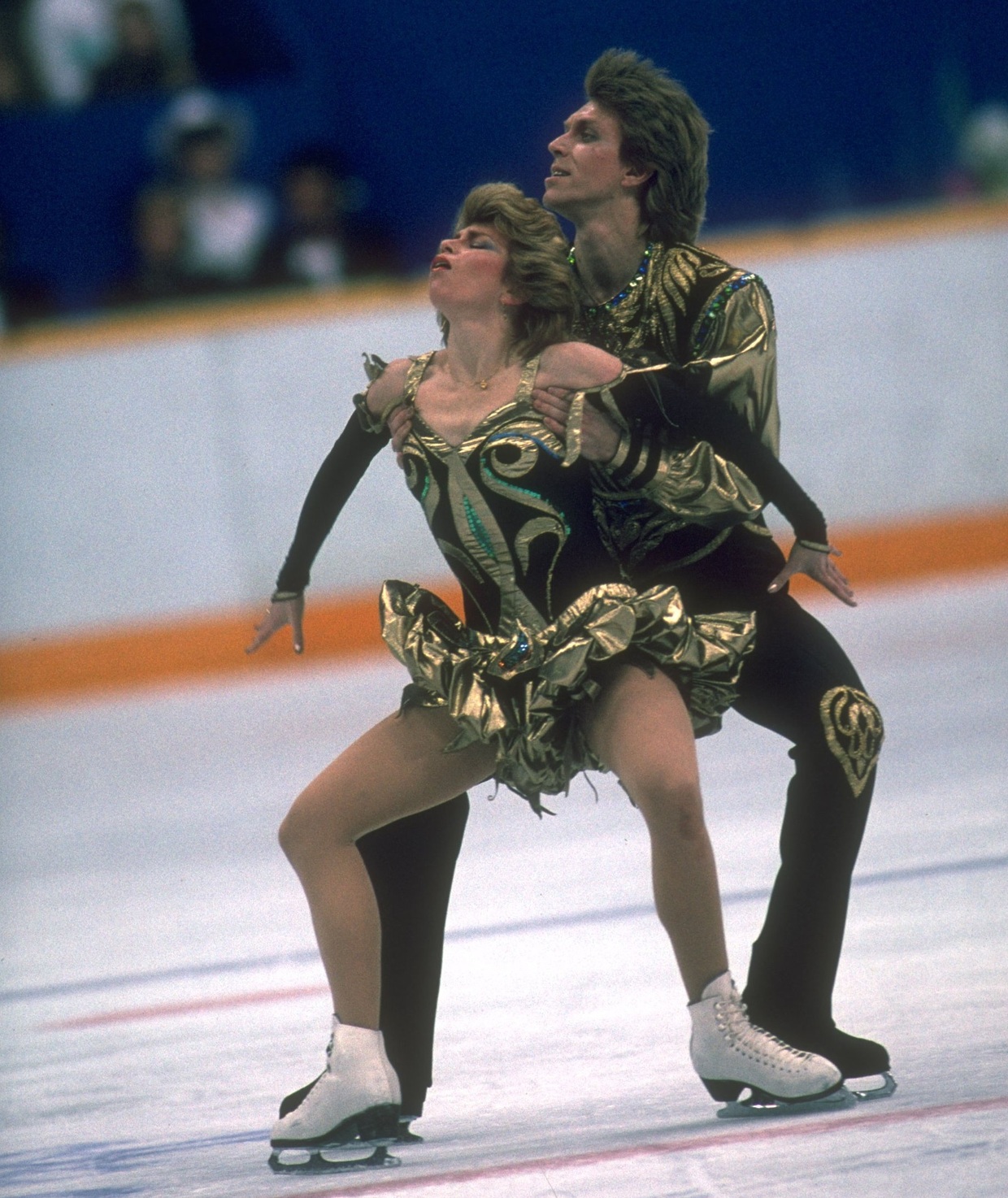From ice hockey to gymnastics, Russian athletes have created numerous signature moves down the years
Russian athletes have undoubtedly made their mark on sports worldwide – so much so that some moves in their chosen disciplines have been named in their honor because of the way they popularized or introduced them. Here, we look at five sports moves named after Russian stars.
‘The Datsyuk Flip’ – ice hockey
Known as the ‘Magic Man’ for the way he handled his stick to pull off some unfathomable moves, Pavel Datsyuk was one of the biggest names in hockey in the 2000s and enjoyed a 15-year career in the elite NHL with the Detroit Red Wings before returning to his homeland.
Datsyuk will forever be a legend in the Motor City for his contributions to Stanley Cup titles in 2002 and 2008, but his participation on this list came after heroics in 2010.
Taking the first shot of a shootout against the Red Wings’ bitter rivals the Chicago Blackhawks in a January regular season game, Datsyuk made a mockery of opposition goaltender Antti Niemi.
Gliding up to the Finn down the middle, Datsyuk did a slight ‘dirty dangle’ that he was famous for, then quickly flicked his wrist to make it appear as if he would backhand his effort. Instead, the Russian scooped the puck with the inside of his stick into the net.
Datsyuk’s audacity understandably sent the Joe Louis Arena into rapture, as well as his teammates. “They can’t believe it on the Red Wings bench,” said one elated commentator. “I don’t think I’ve ever seen a slow-mo play like that.”
While Niemi and the Blackhawks had the last laugh that season as he became the first Finnish goalie to win the Stanley Cup, he is often remembered for being on the wrong end of Datsyuk’s trick shot.
The move became immortalized as the ‘Datsyuk Flip’, with hockey enthusiasts attempting to pull it off on the popular NHL video game to this day.
On a side note, the ‘Datsyuk deke’ wasn’t too shoddy either. Again produced in a shootout, it led one pundit to ask: “How many does he have in his repertoire?”
‘The Khorkina’ – artistic gymnastics (uneven bars)
Svetlana Khorkina burst onto the global stage with a pair of silver medals at the 1994 World Championships in Brisbane, not long after her 15th birthday. Two years later, she enjoyed gold-medal success in the uneven bars at the Atlanta Olympics, bouncing back brilliantly after suffering initial disappointment with a 15th-place finish in the all-around final.
The comeback ushered in one of the most revered artistic gymnastics careers of all time, with further high points including another Olympic gold medal and 20 World Championship medals as Khorkina became the first gymnast in history to win three all-around world titles.
Khorkina’s main specialties were the uneven bars and balance beam, and she left a legacy with at least nine moves named after her mainly in those disciplines, in addition to a few spread across floor exercises and the vault.
The first couple – the Khorkina and the Khorkina 2 – come in the uneven bars and involve half-turn hangs. In the former, Khorkina started with a back uprise and then made a straddle flight over the high bar. In the latter, she had inner front support on the low bar, formed a clear hip circle to handstand, then impressively half-turned in full flight to hang on the high bar. There is another move called the Khorkina-Chow or Chow-Khorkina, which was first performed by Amy Chow and is a Stadler one-and-a-half pirouette.
In the 1, 2 and 3 balance beam moves named after her, Khorkina dismounted the apparatus and performed either a full twist, a gainer two-and-a-half twist, or gainer triple twist. In the Khorkina 1 and 2 moves on the vault, there were also plenty of twists and turns with ‘the Khorkina’ in the floor exercise similarly involving a hop with one and a half turns.
Four of these skills are currently listed in the Code of Points (CoP), with Khorkina previously holding the record for the most eponym moves (nine) before some of them were removed ahead of the 2022-2024 quad as part of a regular CoP update.
‘The Besti Squat’ – figure skating
Natalia Bestemianova was a Soviet figure-skating icon who, while overseen by legendary coach Tatiana Tarasova, made her name in the 1980s alongside her partner Andrei Bukin as a four-time world and five-time European champion.
After suffering silver-medal disappointment at the 1984 Winter Olympics in Sarajevo, she finally struck gold in Calgary four years later.
It was throughout 1988 that ‘the Besti Squat,’ unofficially named after Bestemianova, gained prominence as she used it repeatedly in her free dance with Bukin.
The move resembles the spread eagle, given that the skater who executes it glides along an edge with both skates on the ice.
The toes are turned out to the sides with the heels facing one another, and the knees are then bent outwards to a squatting position with the torso upright and thighs parallel to the ice.

© Getty Images
While ‘the Besti Squat’ has become a popular move still used four decades later, not everyone approved of Bestemianova’s performances at the time. Reporting from the 1988 Winter Games, the New York Times claimed that Bestemianova and Bukin’s free dance program “suggested they might take the prize for vulgarity as well,” and that the endless debate as to whether ice dance is sport or art had come to a rest.
“Her aggressiveness did not agree with a submissive image and the pair’s overall harsh style made no sense of the spliced-in moves – especially the spread eagle or plie,” it was stated.
Given that the routine landed her gold, however, it is doubtful that Bestemianova, who later became a TV personality on the Russian equivalent of ‘Dancing on Ice,’ cared too much.
The Moscow native was perhaps ahead of her time, with out-of-touch critics falling wide of the mark.
‘The Karelin Lift’ – wrestling
Known as the ‘Russian Bear’, ‘Russian King Kong’, ‘the Experiment’, and ‘Alexander the Great’, Aleksandr Karelin retired in 2000 widely considered to be the greatest wrestler of all time – and among the most dominant athletes ever seen in any sport.
Karelin scooped gold at three consecutive Olympic Games from 1988-1996 and put together a monstrous 887-2 record. He claimed silver in his last Games in Sydney in 2000.
Such was Karelin’s dominance, there were inevitable claims that he used PEDs – although the athlete himself put his phenomenal record down to something else. “No one can completely believe that I am natural. The most important drug is to train like a madman – really like a madman. The people who accuse me are those who have never trained once in their life like I train every day of my life,” he once said.
Given his undisputed reign at the top of his sport, it should be no surprise that Karelin had a move named after him. Known as the ‘Karelin Lift,’ it saw him hold his hapless opponents in the air with his enormous reach and then body-slam them into the mat.
The reverse body lift frequently saw Karelin awarded five points when executed properly, which was the maximum in the sport. The move started while his foe was lying flat on his back on the mat. Once wrapped up in Karelin’s grasp, opponents found it impossible to wriggle free from a grip described as “anaconda-like.”
While it had long been used, Karelin made the lift his own. He was the first heavyweight to add it to his arsenal and wowed the wrestling world by demonstrating it on opponents weighing up to 130kg (285lbs).
‘The Kabaeva’ – rhythmic gymnastics
One of the most decorated gymnasts in the history of the rhythmic facet of the sport, Alina Kabaeva won Olympic gold in Athens in 2004 after disappointment in Sydney four years earlier, where she had been widely expected to win the all-around event as the reigning world champion but made a costly error.
Kabaeva boasts 14 World Championship medals and 21 at the European Championships from the late 90s and into the 2000s, but her contributions to her discipline go beyond any silverware amassed since becoming European champion as a 15-year-old prodigy.
Kabaeva revolutionized rhythmic gymnastics by introducing new skills and moves. There are no fewer than four named after her, which have been given Roman numerals to distinguish them.
The ‘Kabaeva I’ is a ring leap she performed with both legs, but the ‘Kabaeva II’ is arguably her most famous, involving a backscale pivot from a standing or grounded position.
Kabaeva was the first to perform the backscale pivot, but her other two moves (the ‘Kabaeva III and IV’) saw her balance with support from her chest and split with hand support.
The 39-year-old, who later ventured into politics, is still known as one of the most flexible athletes to ever grace the mats, and it’s not difficult to see why after a recap of the maneuvers she brought to the continental and global stage.
